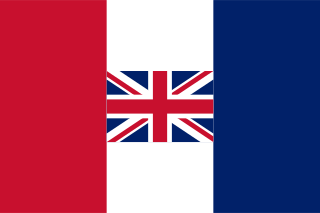

Glen Line was a UK shipping line that was founded in Glasgow in 1867. Its head office was later moved first to London and then to Liverpool.


Glen Line was a UK shipping line that was founded in Glasgow in 1867. Its head office was later moved first to London and then to Liverpool.


The firm had its roots in the co-operation between the Gow and McGregor families in Glasgow in the 1850s. Alan C Gow was a voyage broker, James McGregor organised the freight to fill the ships and by 1860 they were in partnership.
In 1867 Alan Gow had the sailing ship Estrella de Chile built to ply the route between Glasgow, Liverpool, and Chile via Cape Horn. She was wrecked in 1888. In 1868 the partners bought the barque Glenavon. She was the first of their ships to have the Glen- prefix in her name. [1] [2] In 1881 the firm had the iron-hulled steamship Glenavon built. She was wrecked off the coast of China in 1898, killing 53 people. [3]
In 1911, Elder Dempster and Co acquired The Glen Line. During the First World War Glen Line lost five ships to U-boat attacks, including its first motor ship, Glenartney, in 1918.
In 1922, the Glen Line opened its new building on the Bund in Shanghai. The shipping agency occupied the first floor and the upper floors were rented out. [4]
The Glen Line was sold to Alfred Holt's Blue Funnel line in 1935. The company lost two further ships to U-boat attacks in the Second World War.
By 1978 all Glen Line ships had been sold.

Ellerman Lines was a UK cargo and passenger shipping company that operated from the late nineteenth century and into the twentieth century. It was founded in the late 19th century, and continued to expand by acquiring smaller shipping lines until it became one of the largest shipping firms in the World. Setbacks occurred through heavy losses to its merchant fleet in the First and Second World Wars but were overcome in each case.

Alfred Holt and Company, trading as Blue Funnel Line, was a UK shipping company that was founded in 1866 and operated merchant ships for 122 years. It was one of the UK's larger shipowning and operating companies, and as such had a significant role in the country's overseas trade and in the First and Second World Wars.

P Henderson & Company, also known as Paddy Henderson, was a ship owning and management company based in Glasgow, Scotland and operating to Burma. Patrick Henderson started business in Glasgow as a merchant at the age of 25 in 1834. He had three brothers. Two were merchants working for an agent in the Italian port of Leghorn; the third, George, was a sea captain with his own ship.
The SS City of Manchester was an iron-hulled single screw liner built 1851 by Tod & McGregor, Glasgow, Scotland and the second such ship owned by the Inman Line. It was an improved version of their first ship City of Glasgow which had been launched a year earlier.
SS Mohamed Ali El-Kebir, formerly SS Teno, was one of a pair of steam turbine ocean liners built in Scotland in 1922 for the Chilean company CSAV. She and her sister ship Aconcagua ran between Valparaíso and New York via the Panama Canal until 1932, when CSAV was hit by the Great Depression and surrendered the two ships to the Scottish shipbuilder Lithgows to clear a debt.

The Jardine Matheson Building is a seven-storey historical building on the Bund in Shanghai, China.

Estrella de Chile was an iron three-masted barque of the Glen Line built to ply the route between Glasgow, Liverpool, and Chile via Cape Horn. The ship was wrecked in the Solway Firth on 25 November 1888 after getting into difficulties when the master misjudged the ship's position. The first mate drowned, but the rest of the crew were rescued by a lifeboat.

The Glenavon was a British iron cargo ship of the Glen Line that was wrecked off the coast of China in 1898. Four people, but not the master, lost their lives in the wreck. The master had his licence suspended for one year.

William Pithie was a Scottish mariner who was master of the Glenavon when it was wrecked off the coast of China in 1898. Four people, but not Pithie, lost their lives in the wreck. Pithie had his licence suspended for one year.
Sir Herbert Gladstone "Mac" McDavid CBE MSM (1898–1966) was from Liverpool, UK. He was awarded the Meritorious Service Medal in the First World War. He ultimately became chairman, managing director and partner of shipping companies, deputy director of sea transport in the UK Ministry of War Transport during the Second World War and was knighted for organising shipping during the Suez crisis in 1956.

HMS Tormentor was an R-class destroyer built by Alexander Stephen & Sons in Glasgow, Scotland. The ship is a notable wreck off Old Castle Head, near Manorbier in southern Wales.